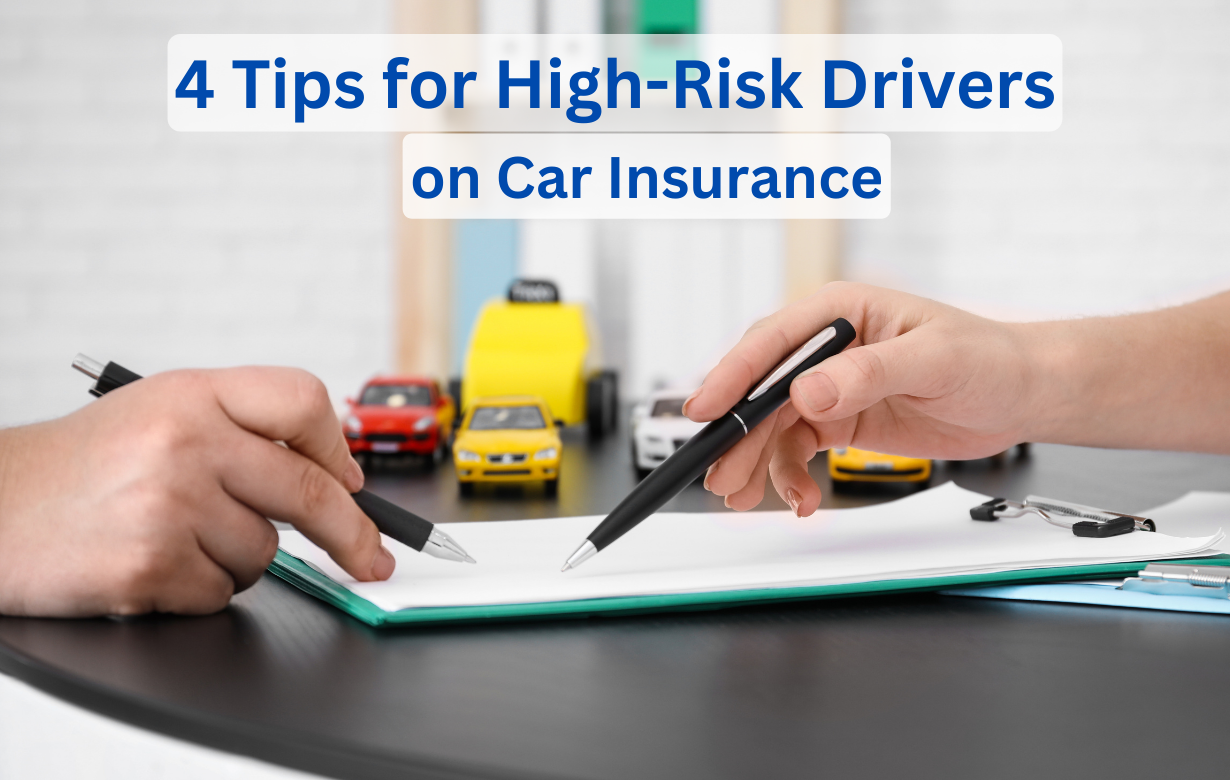4 Tips for High-Risk Drivers on Car Insurance
 |
| 4 Tips for High-Risk Drivers on Car Insurance |
Even though we all want to feel the rush of driving fast, the wind in our hair, spotting an empty length of road, and pushing the pedal to the metal, there are numerous disadvantages. The most crucial and risky thing is to get involved in a bad car accident. No one wants to be in that situation, which is why we stick to the speed limit and drive responsibly.
However, some drivers are unwilling to be constrained by the law or the hazards of being involved in a car accident. These high-risk drivers are the ones who drive too quickly and too recklessly. If you are one of them, you could be in for a costly surprise. Your vehicle insurance rates would be as high as your speed on an empty freeway due to your high-risk driving behaviors.
However, auto insurance is both necessary and required. If you don't choose wisely, you can end up spending more and getting less coverage. As a result, we have chosen and presented some advice that will be quite valuable if you are a high-risk driver. Follow these to ensure a safe driving experience and save money on vehicle insurance. Let's get this party started.
1. Deductibles are essential
When you file an auto insurance claim, you must pay a modest amount of money (related to the amount of the insurance payout) out of your own pocket before the car insurance company pays the remainder. This is what your insurance policy's "deductible" is. It is often calculated as a percentage of your entire coverage amount.
For example, if you are in a car accident and the whole cost of repairs is $5,000 and your deductible is $1,000, you must pay $1,000 first, and the vehicle insurance company will pay the remaining $4,000.
You cannot file a claim if the cost of repairs is less than $1,000. So, how do high-risk drivers do when it comes to deductibles? It has the potential to help you save or lose a significant amount of money. Deductibles have a direct impact on the cost of your insurance premium. A higher deductible will lower your insurance premiums, and vice versa.
But here's the catch: while raising your deductible lowers your insurance premiums, you'll have to pay more out of pocket in the event of an accident. If you have a low deductible, you will pay less out of pocket in the event of a car accident, but you will pay more in insurance premiums.
So, if you are a high-risk driver, meaning you are more likely to be involved in a car accident and file an insurance claim, you should keep your deductibles low. Yes, you will have to pay a higher insurance premium, but if you are involved in a car accident, you will not have to spend a fortune.
2. Find the best alternatives
Being a high-risk driver automatically disqualifies you from low and affordable auto insurance rates. Car insurance firms will charge you extra for insurance plans and premium rates because you are more likely to file an insurance claim. So it all boils down to making the proper decision.
Rather than focusing on one or two auto insurance firms, obtain rates from all vehicle insurance providers in your state, including local businesses. You must pick a firm that charges the least amount of money while providing enough insurance coverage. You will miss out on some amazing, money-saving vehicle insurance companies if you do not compare costs.
3. Increase your insurance limit
Being a high-risk driver is perilous enough, but it may be made even more dangerous if your liability coverage level is only sufficient to meet the state's minimum coverage limit requirements. You have no idea how lethal this combination is.
The minimum coverage level set by the state is insufficient to cover the cost of repairs and medical treatments. A single ambulance ride can cost hundreds of dollars; do you believe $50,000 will cover comprehensive treatment?
Increase your coverage level, especially if you are a high-risk driver, to avoid this. The high likelihood of you triggering an accident is reason enough to be prepared for a large insurance claim. When it comes to coverage restrictions, it is prudent to hope for the best while preparing for the worst.
4. Purchase a personal protection plan
Both drivers will be injured in a car collision involving two vehicles. So, unless you are made of steel, you must also consider your health. If you drive without a personal injury protection plan, you may not only be in a bad accident, but you may also end up paying a fortune for medical procedures. You may forego car repairs if you don't have the money to fix them, but you can't do the same for your body.
There are 12 states where having a personal injury protection plan is required. Even if you do not live in one of these "no-fault" jurisdictions, purchasing a personal injury protection plan is well worth the money, even if you are not a high-risk driver. A personal injury protection plan will cover the expense of medical treatments required as a result of an automobile accident, regardless of who was at fault.
What's more, the personal injury protection plan covers any lost wages as a result of the accident. So, if you don't already have it, purchase this policy and make driving a little safer. It may be expensive, but isn't your life worth more than pennies?
